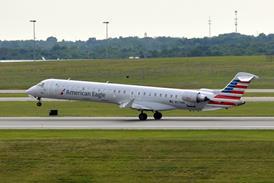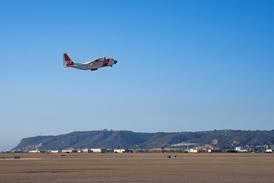Finnair has set 2050 as the year it hopes to halve its emissions, as it undertakes an ongoing sustainability push.
Finnair is setting out its sustainability credentials including the aim to halve its emissions by 2050 as pressure in Europe for airlines to tackle their climate change impact increases.
The move to halve its emissions is in line with the industry’s wider target, set out by IATA, to reduce carbon dioxide emissions to half their 2005 level by 2050.
In the nearer term, the carrier hopes to be hopes to be achieving zero-growth in its emission levels by next year.
Speaking to FlightGlobal, Finnair regional manager for Singapore, Malaysia and Indonesia Sebastian Grossmann acknowledged this is an “ambitious target”, but cites several factors working to the carrier’s advantage.
For one, its routes between Finland and Asia are among the shortest for flights to Europe, which equate to lower emissions on average. The Oneworld carrier is also in the process of fleet renewal, moving to a newer, more fuel efficient aircraft, like its Airbus A350 fleet.
Finnair also in August undertook its first biofuel flights, between Helsinki and San Francisco, as part of its Push for Change campaign.
Grossman tells FlightGlobal that the airline is also working to reduce the overall weight it carries on its aircraft. It has already completely eliminated magazines and newspapers on board, and is cutting back on plastic wrapping and other plastics on flights. For instance, amenity kits are no longer wrapped in plastic, and it has stopped giving out individual milk pods on intra-European flights.
The move to cut unnecessary plastic use has seen the carrier shave off 4,500kg in plastic a year.
As the airline makes incremental steps in working towards its targets, it is also aware of a changing customer mindsets. Air transport’s impact on climate change is ever more high profile within Europe - with the “flight-shame” movement which originated in Sweden and where people choose not to fly but to take other modes of transportation such as trains ‒ gaining momentum in Europe.
Grossmann though questions whether alternative forms of transport are so emissions neutral, pointing out that other forms of transportation have the their own impact.
“For aviation, we know that [emissions come from] jet fuel,” he says, reiterating the point that developing a sustainable biofuels solution will go a long way in cutting down emissions from the aviation sector.
Finnair has also received feedback from its customers on its sustainability efforts. For example, its push for plastic reduction was in part spurred by feedback from passengers, some of whom have asked why there was a need for unnecessary plastic packaging.
Grossmann says that with the notion of sustainable travel “likely to continue” well into the future, Finnair is doing its best to “build its sustainable footprint”, which involves reducing its emissions and waste output.
Story updated with correct information about Finnair’s fuel efficient aircraft renewal plans


























